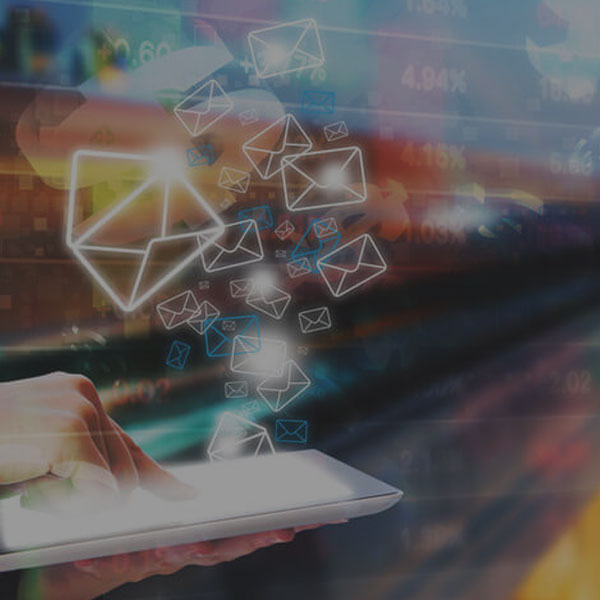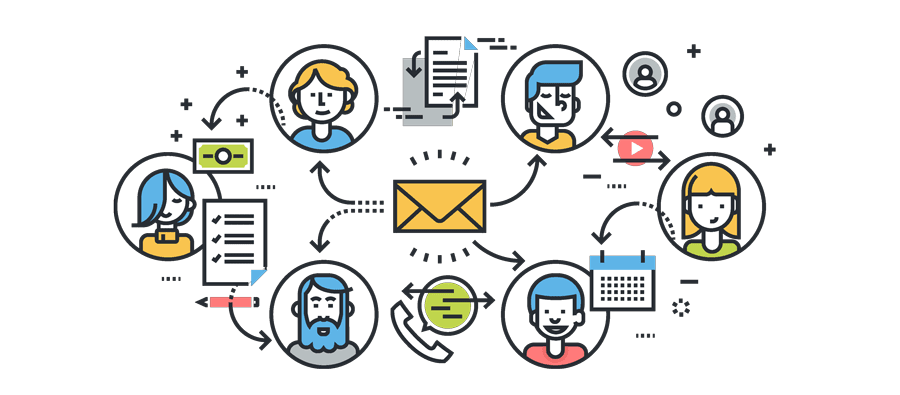
Email marketing is one of the most effective tools in a marketer’s bag—when done right that is. Gone are the days of blanket emails with the same message sent at the same time to all prospects or customers. Successful email marketing is personalized and triggered by a user’s behavior – downloading a brochure or watching a video for example.
Automated email workflows let you leverage the best email marketing has to offer. Even better? Once they are set up, they do the work for you.
Automated email workflows let you leverage the best email marketing has to offer. Even better? Once they are set up, they do the work for you.
What is an email workflow?
An email workflow is series of automated emails that will be sent based on a person’s behavior or contact information. With workflows, you can trigger actions based on any information you have about your leads, allowing you to send the right message to the right person at the right time.Email workflows escort your audience through the buyer’s journey. Once a user triggers awareness by taking some action on your site or clicking on an ad, automated emails are sent over time to draw the right audience deeper into your marketing funnel. A typical marketing funnel might start with awareness then move to engagement and further into decision-making and finally into long-term nurturing of the client.
Why should you use an email workflows?
Too often email marketing follows the path of direct mail: send to everyone and hope for a 2% response. Email workflows let you hone in on users that are true prospects with potential. Will you send out fewer emails? Probably. But those fewer emails are more likely to reach people that want to have a conversation with you and ultimately become a customer. Email workflows make conversion easier and result in more business.Email workflows make conversion easier and result in more business. Tweet this

Automated email workflows range from simple to complex, but the end of the workflow is not necessarily the end of the interaction.
There are different types of email workflows. Let’s take a quick look at the most common.
1. Linear email workflow
A physician’s office wants to attract new patients for a specific procedure. They write a whitepaper about this procedure and post it on their website. The email workflow is triggered when a prospective patient fills out a form and downloads the whitepaper.- Step 1 | Awareness: Send email: “Here’s Your Whitepaper”
- Step 2 | Increased Awareness: 5 days later, Send email: “5 Things You Need to Know”
- Step 3 | Increased Awareness: 10 days later, Send email: “Patient Case Study”
- Step 4 | Engagement: 10 days later, Send email: “Request Your Free Consultation”
A few things to notice in that workflow:
- They determined a specific trigger that would attract people interested in the procedure and then set up a simple form to gather key qualifying information about the prospective patient.
- They thought about what types of information would be useful to the prospective patient, took the time to thoughtfully develop that information, and then offered it over time. That information could range from articles to case studies to videos to webinar recordings… any content that is of value and related to the procedure would qualify.
- The email workflow doesn’t leap from awareness straight to scheduling the consultation. It takes the prospective patient on a journey. It establishes the physician as an expert in the procedure. It makes the prospective patient feel more confident in taking the next step.
2. If/then email workflow
Here’s a real life example that I just experienced. I am a volunteer youth minister and was searching for ideas for a teen night. I found some free plans, filled out a short form and downloaded those plans to use.I had triggered a workflow:
- I received a series of emails offering additional plans over the course of the next 45 days – none of which I took action on.
- After that 45 days of no response I received an email with a video link about common youth ministry problems. That was interesting to me so I watched the video.
- Within 24 hours I received a link to a second, related video – which I also watched.
- One day later I received a link to register for a webinar and at the end of that webinar they pushed me to a link to pay for a subscription to lesson plans.
Automated email workflows take some time and planning to set up but once they are, they do an excellent job of personalized marketing for you.
Key learnings:
- Set a specific goal.
- Consider what pain points your audience has related to that goal.
- Develop a content plan that creatively addresses those pain points.
- Establish an automated email workflow to execute your plan and move people to your goal.
One more key learning: Measure your results
You may have done excellent audience research when you setup your email workflow, but once it is working you can learn even more from watching how your specific audience reacts to the messages. You can start adding branches to your journey based on user behavior. Change the time between messages and monitor how that changes behavior. Add new content into the workflow to see if it prompts a higher response. Test subject lines, time of delivery, the list is practically endless. Email workflows have lots of options empowering you to finetune them to really work for your needs.Learn more about email workflows from inbound marketing leader Hubspot: 9 undeniable advantages of using personalized marketing
Before you go… Let’s talk about design for just a minute
The emails that you’re sending need to have a polished appearance to build brand recognition and encourage engagement. They don’t have to be complicated but take the time to design your email graphics so that they reinforce your online brand and you’ll get better results. Graphic calls to action are also worth considering for higher engagement.
Automated workflows are a powerful tool in your successful email marketing toolbox.
Let TBH Creative help you plan, create and execute an inbound marketing campaign.
